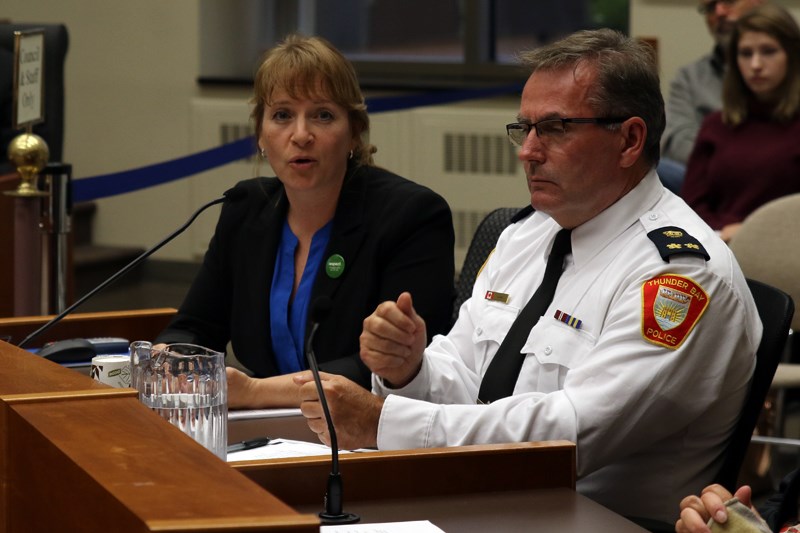THUNDER BAY -- Although most crime statistics are falling, risk factors are on the rise and program advocates say that message has yet to reach senior levels of government.
Ontario has rejected all three program funding proposals the Thunder Bay Crime Prevention Council has submitted over two years and the council's leadership claims not to have even received an explanation.
"We recognize the need is great across the province," said council coordinator Lee-Ann Chevrette.
"However, we feel very strongly that Thunder Bay has some unique and very complex social issues and we need other orders of government to help us, to step up and to provide some level of support, so we can start to really tackle some of these social issues in a targeted way, so we can reduce crime and victimization in our community."
One such program would have been a partnership with the Thunder Bay Police Service.
Two others would have provided mental health supports and other services for those who presented an elevated risk in either being victimized by crime or coming into contact with the law.
Chevrette said on paper, local crime statistics have been falling since 1998.
Property crime and violent crime have both decreased while the decline in Thunder Bay's youth crime represents the steepest drop among metropolitan cities across Canada.
Those numbers, she pointed out, don't tell the whole story.
"What's happening is, there are more interventions. People are being diverted so they're not being charged with those crimes," she said.
"They're going to alternative diversion programs. They're getting the supports they need."
Meanwhile, the web of social issues attributed to risk is weaving a larger, more long-term trap.
"We're still seeing increased interactions with police, increased incidents of disorder in our community, problematic substance use, mental health conditions. We know a lot of people continue to struggle with poverty and homelessness," she said.
"It's those social issues we really need to address because when we're talking about crime, we're talking about victimization."
The council is applying for a five-year federal program envelope that would bring supports and programming to youth in their own neighbourhoods.
But even the longest-standing local program of its kind is experiencing funding challenges.
Linda Bruins has been running the Evergreen United Neighbourhood organization for a decade. Her program is based in two locations in the Simpson Street-Ogden area, including the former Hells Angels clubhouse. Evergreen reaches children in the neighbourhood with the highest concentration of working poor residents.
Bruins said even her proven track record hasn't provided stable funding. While she fills out grants every two months, much of her staff remains employed part time and while she's required to fundraise in addition to grant applications, some grants can disappear without explanation.
"A big part of my job is chasing money in order to pay myself and my staff to do proven, quality work," she said.
"I've had a good track record but the last couple of years have been very challenging. Funders have a particular idea about what they want to do and meeting community need through what's available when funds come in."
